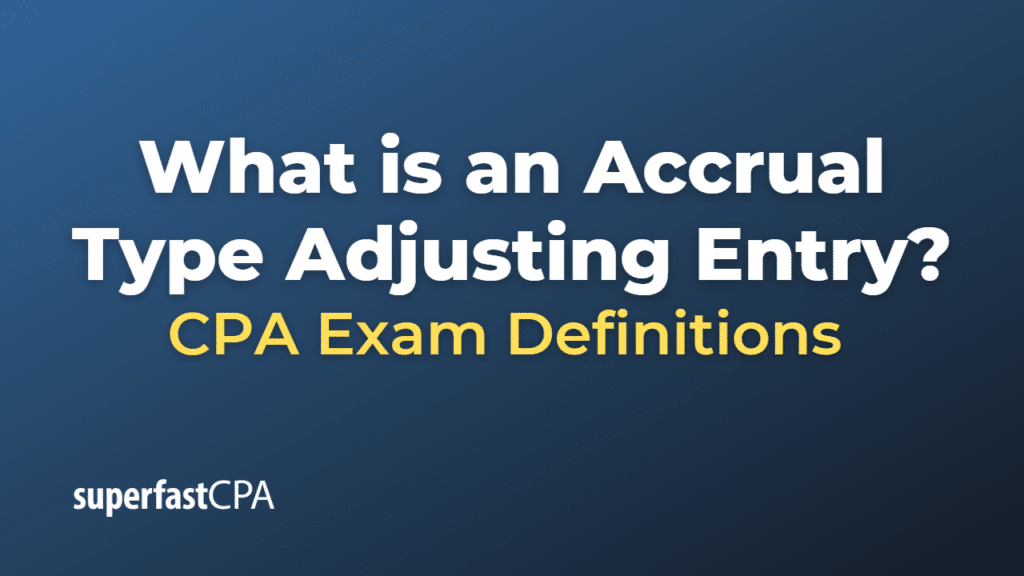Accrual Type Adjusting Entry
An accrual-type adjusting entry is a journal entry made at the end of an accounting period to record and recognize revenues and expenses that have been incurred but not yet recorded in the company’s books. Accrual-type adjusting entries are necessary in accrual accounting to ensure that financial statements accurately reflect the company’s financial position and performance for a specific period.
There are two main types of accrual-type adjusting entries:
- Accrued Revenues: These entries record revenues that have been earned but not yet billed or received. The company has provided goods or services to the customers, but the corresponding invoices have not been issued or payments have not been collected. The adjusting entry typically involves debiting (increasing) an asset account, such as Accounts Receivable, and crediting (increasing) a revenue account.
Example: A web design company completed a project for a client in December, but it hasn’t invoiced the client yet. The project fee is $5,000. The adjusting entry would be:
Debit: Accounts Receivable – $5,000 Credit: Web Design Revenue – $5,000
- Accrued Expenses: These entries record expenses that have been incurred but not yet paid or recorded. The company has received goods or services from vendors or suppliers, but the corresponding bills have not been received or paid. The adjusting entry typically involves debiting (increasing) an expense account and crediting (increasing) a liability account, such as Accounts Payable.
Example: A company has accrued $3,000 in utility expenses for the month of December but has not received the utility bill yet. The adjusting entry would be:
Debit: Utility Expense – $3,000 Credit: Accounts Payable – $3,000
Accrual-type adjusting entries ensure that the revenues and expenses are recognized in the proper accounting period, in accordance with the accrual accounting method and the matching principle. This helps maintain accurate and consistent financial reporting for businesses.
Example of Accrual Type Adjusting Entry
Let’s consider a hypothetical example involving both accrued revenues and accrued expenses.
Imagine a company called “Green Landscaping” that provides lawn care services to its clients. The company follows accrual accounting, and its accounting period ends on December 31. As of December 31, Green Landscaping has completed several jobs for which it has not yet billed the clients, totaling $4,000 in earned revenue. Additionally, the company has incurred $1,500 in wages for work performed by its employees in December but will not process payroll until January.
Here are the accrual-type adjusting entries Green Landscaping needs to make at the end of the accounting period:
- Accrued Revenues: The company has earned $4,000 in revenue from completed jobs but has not yet billed the clients. The adjusting entry would be:Debit: Accounts Receivable – $4,000 Credit: Service Revenue – $4,000This entry records the earned revenue and increases the Accounts Receivable account, indicating that the company expects to collect the revenue in the future.
- Accrued Expenses: Green Landscaping has incurred $1,500 in employee wages for work performed in December, but it will not process the payroll until January. The adjusting entry would be:Debit: Wages Expense – $1,500 Credit: Wages Payable – $1,500This entry records the incurred wages expense and increases the Wages Payable account, indicating that the company has an obligation to pay the wages in the future.
By making these accrual-type adjusting entries, Green Landscaping ensures that its financial statements accurately reflect the company’s financial performance for the accounting period ending on December 31, in accordance with the accrual accounting method and the matching principle.













